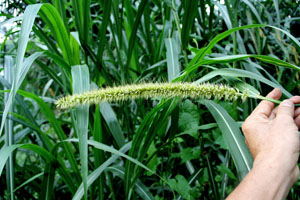
Entrepreneurship , NGO, SHG, CSR based
Entrepreneurship involves innovative ventures for profit. NGOs are non-profit organizations aiding social causes. SHGs are community-based self-help groups. CSR involves corporate responsibility towards society..
Entrepreneurship Support
Services aiding small-scale business establishment..
Cultivation of Napier Grass
Napier grass is a leafy, branching, vigorous growing perennial, attaining, under favorable conditions, a height of 10 to 15 feet at maturity. It has a strong, extensive fibrous root system which enables the plant to become quickly and permanently established in the soil. The leaf blades are usually 1 to 1% inches wide and 2 to 3 feet long. Seed heads which are golden yellow to tawny in color and from 5 to 10 inches in length. Uses of Napier Grass: Napier grass is mainly used as a fodder crop. It is used as feed to the cattle directly or it can also be made as hay or even silage. In African countries, it is used as forage for elephants and hence, it is also termed as elephant grass. Napier plant plays a major role in the production of biomass. It can also be harvested up to 6 times in a single year. This makes it a very good raw material for the production of biofuel. The plantation of Napier grass is done in the marginal slopes and lands in order to improve the fertility of the soil and to decrease the erosion of soil. Napier grass is the primary source for the production of paper in many regions across the country. Napier grass is used in the pest management strategy as a pull crop which attracts the pests to come out of the plant. The Napier grass leaves and shoots which are young are considered edible and they are also used to make stews and even soups. SamridhaSaathi (SAmSA) will cultivate Napier Grass bed under Integrated Farming System ( IFS) Model in each farmer’s field..